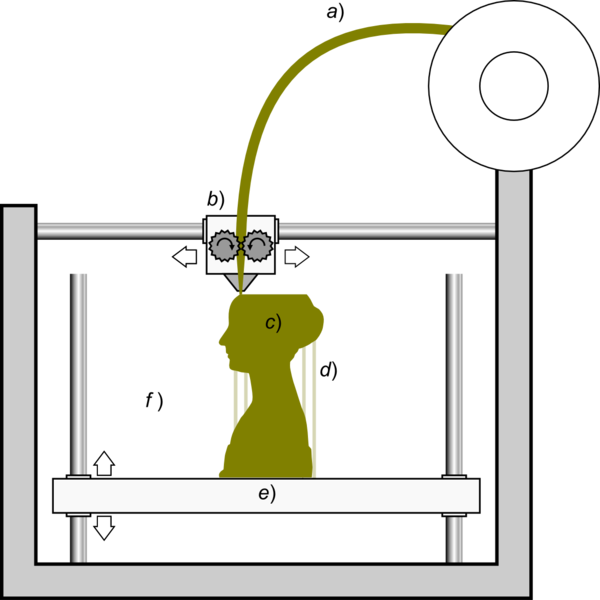3D Printing Machine
- Details
- Hits: 2300
One of the key advantages of 3D printing is the ability to produce very complex shapes or geometries that would be otherwise impossible to construct by hand, including hollow parts or parts with internal truss structures to reduce weight. Fused deposition modeling, or FDM, is the most common 3D printing process in use as of 2018.
یکی از مزایای اصلی چاپ سه بعدی، توانایی تولید اشکال یا هندسه های بسیار پیچیده است که در صورت ساخت دستی غیرممکن است، از جمله قطعات توخالی یا قطعات با ساختارهای خرپایی داخلی برای کاهش وزن. مدل سازی رسوب ذوب شده یا FDM رایج ترین فرآیند چاپ سه بعدی است که از سال 2018 استفاده می شود.

3D printable models may be created with a computer-aided design (CAD) package, via a 3D scanner, or by a plain digital camera and photogrammetry software. 3D printed models created with CAD result in relatively fewer errors than other methods. Errors in 3D printable models can be identified and corrected before printing. The manual modeling process of preparing geometric data for 3D computer graphics is similar to plastic arts such as sculpting. 3D scanning is a process of collecting digital data on the shape and appearance of a real object, creating a digital model based on it.
مدل های قابل چاپ سه بعدی ممکن است با یک بسته طراحی کامپیوتری (CAD) ، از طریق یک اسکنر سه بعدی یا توسط یک دوربین دیجیتال ساده و نرم افزار فتوگرامتری ایجاد شوند. مدل های چاپی سه بعدی که با CAD ایجاد شده اند نسبت به روش های دیگر خطاهای نسبتاً کمتری دارند. خطاهای موجود در مدلهای قابل چاپ سه بعدی را می توان قبل از چاپ شناسایی و اصلاح کرد. فرایند مدل سازی دستی تهیه داده های هندسی برای گرافیک های سه بعدی رایانه ای مشابه هنرهای پلاستیکی مانند مجسمه سازی است. اسکن سه بعدی فرآیندی است برای جمع آوری داده های دیجیتال در مورد شکل و ظاهر یک شی واقعی ، ایجاد یک مدل دیجیتالی بر اساس آن.







